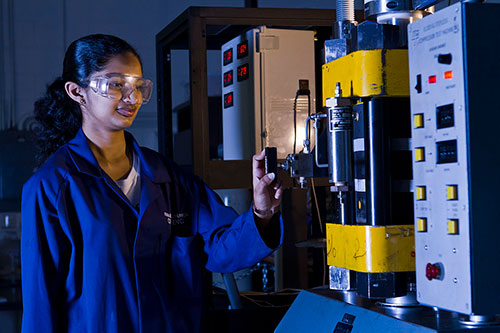CO2-ECBM process has been identified as an economical coal bed methane production enhancing technique as this process has the ability to significantly enhance the coal bed methane production while sequestrating considerable amount of CO2 in deep coal seams, which is an effective measure to mitigate global warming. According to the existing findings, injection of CO2 into deep coal seams causes to induce a strain in between the coal matrix and the adsorbing CO2 layer, which is commonly known as coal matrix swelling. This swelling causes both seam permeability and strength to be significantly reduced. The permeability reduction causes the amount of injectable CO2 and producible methane (CH4) in coal seam to become unpredictable and the strength reduction affects the long term safety of the ECBM and CO2 sequestration processes as this may cause the injected CO2 to be back migrated into the atmosphere after sometime of injection. Therefore, injection of massive amount of CO2 into deep coal seams to harvest maximum amount of methane from the seam with reducing anthropogenic CO2 volume in the atmosphere has become a great challenge.
Therefore, this project aims to discover optimum measures to store maximum amount of CO2 in deep coal seams using enhanced coal-bed methane recovery. This study consist of a series of experimental works to address these issues; which utilize advanced tri-axial set up and core flooding apparatus available in the 3GDeep Laboratory to investigate the effect of various factors (temperature, CO2 phase and pressure. etc.) on CO2 storage and CH4 production using different ranked coal (Lignite to Anthracite) from both Australia and China. Following the flow experiments, effect of CO2 injection under varies conditions on coal mass strength are also studied using the tri-axial set-up and unconfined compressive strength (UCS) machines to check the CO2 adsorption induced strength reduction in coal incorporating the acoustic emission (AE) and Ultrasonic wave generation systems (UT). In addition, the CT scanner and SEM analysis are conducted to study the pore structure variation due to CO2 injection into the sample under various test conditions.
This knowledge is then used to develop new analytical and empirical models to incorporate the physical responses of the coal seam during CO2 sequestration process. Afterward the developed models will be used to create a proper lab-scale numerical model and this model will then be extended for field-scale condition, which will deliver quantitative and qualitative recommendations concerning the expected physical responses of deep coal seams in the ECBM process. It will be a significant contribution as it represents a necessary component of an effort to ensure that Australia effectively and economically fulfils its responsibility in the international effort to curb the threat of global warming.

